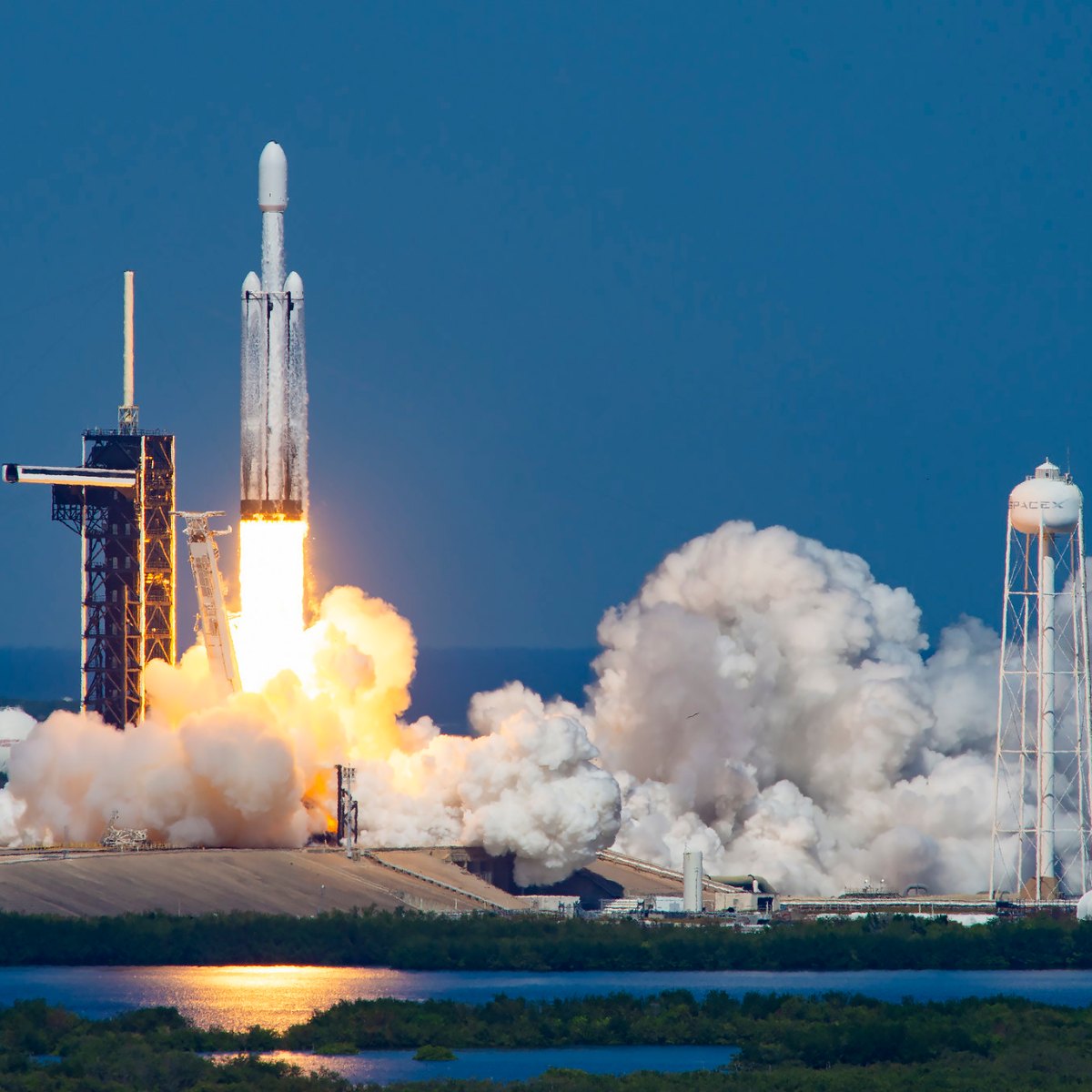NASA’s Ambitious Plan: SpaceX Falcon Heavy to Launch the Dragonfly Mission to Titan
In a significant development for space exploration, NASA has announced its decision to utilize SpaceX’s Falcon Heavy rocket for a groundbreaking mission to Titan, one of Saturn’s moons. This mission is set to launch in 2028 and represents a substantial investment in the exploration of our solar system’s more distant realms. The contract, valued at $256.6 million, was officially awarded to SpaceX on November 25, marking a critical step forward for the mission known as Dragonfly.
Understanding the Dragonfly Mission
The Dragonfly mission is an ambitious project under NASA’s New Frontiers program, a series of missions designed to explore the solar system with innovative approaches. This particular mission will involve landing a spacecraft on Titan, Saturn’s largest moon, which boasts an atmosphere denser than that of Earth. What sets Dragonfly apart is its design as a rotorcraft, meaning it will be able to fly from one location to another across Titan’s surface. This mobility will allow it to conduct extensive research into the moon’s habitability and assess whether it might have once harbored life.
A Closer Look at the Falcon Heavy Launch
The selection of the Falcon Heavy for this mission is noteworthy. SpaceX’s heavy-lift launch vehicle has been chosen for its ability to carry the substantial payloads required for deep-space missions. In previous instances, the Falcon Heavy has been used for other significant NASA missions, such as the Europa Clipper and the Psyche asteroid mission. However, the contract value for the Dragonfly mission is notably higher compared to those missions, which were valued at $178 million and $117 million, respectively.
The increased cost can be attributed to Dragonfly’s unique requirements. Unlike other missions, Dragonfly will be powered by a radioisotope thermoelectric generator (RTG). This type of power source requires additional mission management and handling, contributing to the higher overall cost. For reference, in 2021, NASA awarded SpaceX a $331.8 million contract for the Falcon Heavy launch of the first two elements of the lunar Gateway, which also involved complex requirements like an extended payload fairing and additional prelaunch processing.
Financial and Developmental Challenges
The journey to this point has not been without its challenges. Initially, when Dragonfly was selected in 2019, it was part of NASA’s New Frontiers program with a cost cap set at $850 million, excluding launch and operations. However, by April, the mission had passed a critical confirmation review despite its cost estimate soaring to $3.35 billion.
Several factors have contributed to this increase in cost. NASA has attributed the financial escalation to budget constraints that prolonged the early development phases, ultimately delaying the launch from 2026 to 2028. Additionally, unforeseen circumstances such as the COVID-19 pandemic affected labor costs and supply chain logistics, further complicating the mission’s budgeting. The mission also underwent a comprehensive design review, which NASA described as an "in-depth design iteration" before reaching its preliminary design review stage.
Technical Requirements and Alternatives
The use of an RTG in the Dragonfly mission poses specific challenges. RTGs are a type of power source that converts the heat released by the decay of radioactive materials into electricity, and they are often used in space missions that need a reliable power source far from the Sun. Handling and integrating such a power source requires specialized procedures and safety measures, which add to the mission’s complexity and cost.
NASA’s announcement did not specify whether other launch vehicles were considered for the Dragonfly mission. While potential alternatives like Blue Origin’s New Glenn and United Launch Alliance’s Vulcan Centaur are expected to be operational by 2028, they must first be certified for high-value missions like Dragonfly, especially those involving an RTG. The selection process for the launch vehicle is crucial, as it must ensure both the safety and success of such a high-stakes mission.
The Bigger Picture of Space Exploration
The Dragonfly mission to Titan is a testament to NASA’s commitment to exploring the outer solar system and understanding the conditions that could support life beyond Earth. Titan, with its dense atmosphere and surface lakes of liquid methane, presents a unique environment that could offer insights into prebiotic chemistry and possibly even life.
The choice of the Falcon Heavy is also a nod to SpaceX’s growing role in facilitating NASA’s ambitious space endeavors. As private companies like SpaceX continue to innovate and reduce costs for space travel, the partnership between public agencies and private enterprises is becoming increasingly pivotal in pushing the frontiers of what is possible in space exploration.
Conclusion
NASA’s selection of SpaceX’s Falcon Heavy for the Dragonfly mission underscores the importance of collaboration and innovation in space exploration. With a planned launch in 2028, the mission represents a significant investment in the quest to unravel the mysteries of Titan and, by extension, the broader universe. While the mission faces financial and technical challenges, the potential scientific rewards are immense, promising to expand our understanding of the conditions necessary for life and the dynamic processes at play on other celestial bodies.
For more detailed insights and updates on the Dragonfly mission, interested readers can explore NASA’s official announcements and related scientific discussions. The mission’s progress will be closely watched by the global scientific community, eager to see what secrets Titan might reveal.
For more Information, Refer to this article.
































